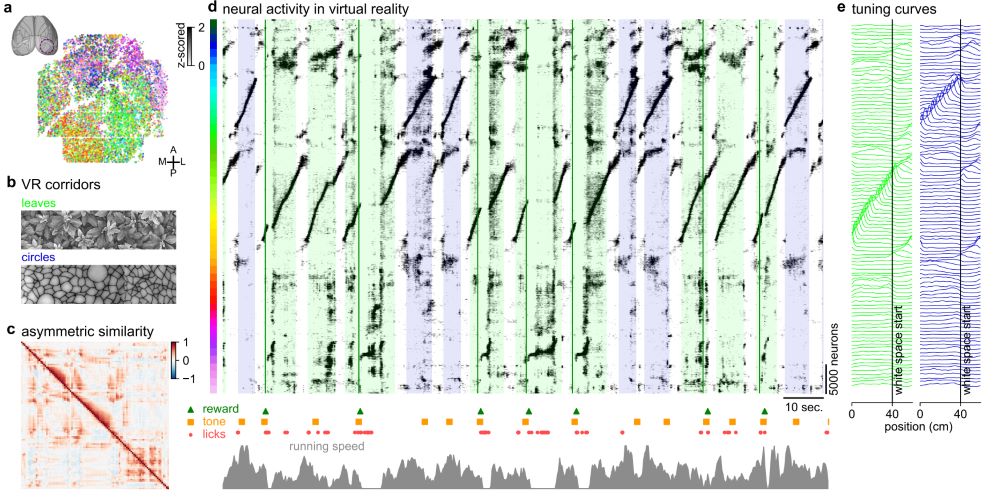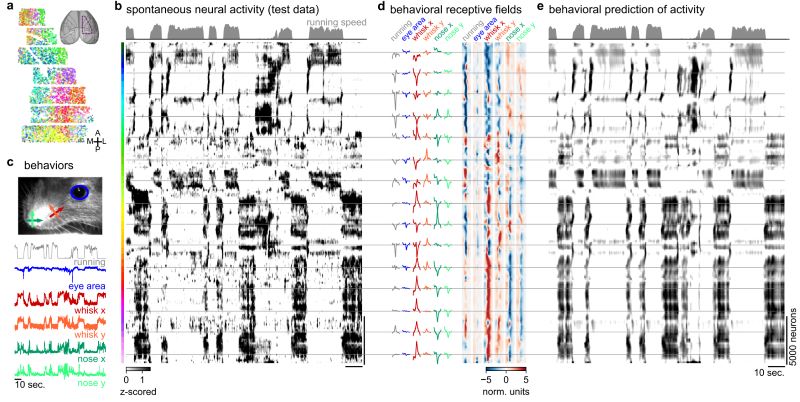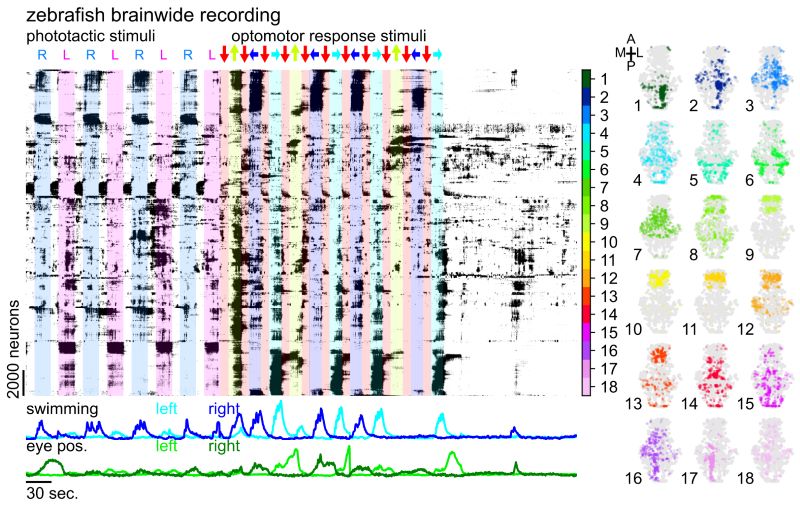Rastermap: A Discovery Method for Neural Population Recordings
Analysis tool for large-scale neural data which allows users to explore dynamical and spatial relationships among neurons.
Abstract
Neurophysiology has long progressed through exploratory experiments and chance discoveries. Anecdotes abound of researchers listening to spikes in real time and noticing patterns of activity related to ongoing stimuli or behaviors. With the advent of large-scale recordings, such close observation of data has become difficult. To find patterns in large-scale neural data, we developed ‘Rastermap’, a visualization method that displays neurons as a raster plot after sorting them along a one-dimensional axis based on their activity patterns. We benchmarked Rastermap on realistic simulations and then used it to explore recordings of tens of thousands of neurons from mouse cortex during spontaneous, stimulus-evoked and task-evoked epochs. We also applied Rastermap to whole-brain zebrafish recordings; to wide-field imaging data; to electrophysiological recordings in rat hippocampus, monkey frontal cortex and various cortical and subcortical regions in mice; and to artificial neural networks. Finally, we illustrate high-dimensional scenarios where Rastermap and similar algorithms cannot be used effectively.
Make your next discovery using #Rastermap, a visualization method for large-scale neural data.

You can explore your data in the #Rastermap graphical user interface:

Rastermap finds single-trial sequences of neural activity in a virtual reality experiment:

Rastermap finds movement-related structure in spontaneous activity in complete darkness:

Rastermap sorting of hippocampus data from Grosmark & Buzsaki, 2016:

Rastermap sorting of wholebrain zebrafish activity from Chen et al, 2018:

Rastermap sorting of neurons from Reinforcement Learning agents playing Atari games:

Learn more on our github: https://github.com/MouseLand/rastermap. Rastermap is fast thanks to numpy, scipy, numba, and scikit-learn. The GUI is powered by pyqt and pyqtgraph, and supports npz, npy, mat and nwb ophys files.
Excited to see new datasets explored with this! If you have issues, please post an issue on the Rastermap github: https://github.com/MouseLand/rastermap/issues.

Powered by Quarto. © Marius Pachitariu & Carsen Stringer lab, 2023.